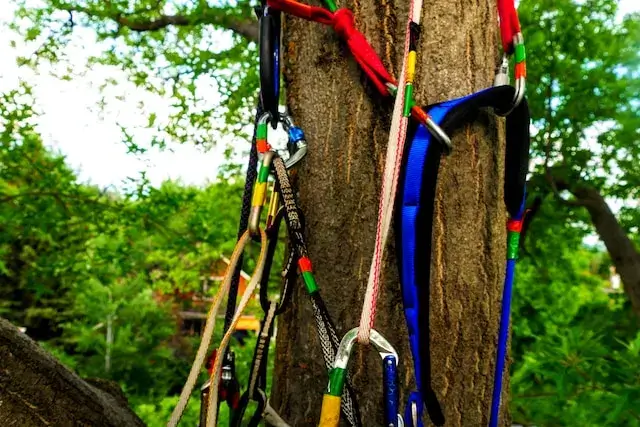How to Build and Use Climbing Anchors Safely
Climbing is an exhilarating and rewarding activity that attracts people from all walks of life. However, as with any adventure sport, there are inherent risks involved, and safety should always be a top priority. One of the most critical aspects of safe climbing is the ability to build and use anchors correctly. In this article, we will explore the essential steps to creating and using climbing anchors that will keep you safe on your next adventure.
Introduction
Before we delve into the specifics of building and using anchors, it’s essential to understand why they’re crucial. Anchors are what keep climbers attached to the rock face or cliff, allowing them to climb with confidence. If an anchor fails, the climber can fall, resulting in serious injury or even death. Therefore, proper anchor building and use are critical skills that every climber should master.
Types of Anchors
Before you start building anchors, it’s essential to understand the various types available to you. There are three primary types of anchors: natural, passive, and active.
Natural Anchors
Natural anchors are features of the rock face or cliff that can be used as anchor points. Examples include trees, boulders, and cracks in the rock. While natural anchors can be incredibly reliable, it’s crucial to inspect them carefully for any signs of weakness or decay before use.
Passive Anchors
Passive anchors are devices that can be placed into cracks or other features in the rock to create an anchor point. Examples of passive anchors include nuts, hexes, and cams. Passive anchors are incredibly versatile and can be used in a wide range of situations.
Active Anchors
Active anchors, also known as mechanical anchors, are devices that are drilled or placed into the rock to create an anchor point. Examples include bolts, pitons, and fixed nuts. Active anchors are the most reliable type of anchor and are often used in high-traffic climbing areas.

Building Anchors
Building anchors is a crucial skill that every climber should master. Here are the steps to follow when building anchors:
Step 1: Identify Anchor Points
The first step in building anchors is to identify suitable anchor points. Look for features on the rock face or cliff that can support the weight of the climbers, such as cracks, ledges, or boulders.
Step 2: Assess the Anchor Points
Once you’ve identified potential anchor points, it’s essential to assess them for strength and stability. Use a gentle tug to test the anchor’s stability and look for any signs of weakness, such as cracks or loose rock.
Step 3: Choose Your Anchors
Select the appropriate type of anchor based on the features of the rock face or cliff and the strength of the anchor points. In general, natural anchors are the most reliable, followed by passive anchors and then active anchors.
Step 4: Set Up the Anchor
Once you’ve chosen your anchors, it’s time to set up the anchor. Use slings, cord, or webbing to connect the anchors to create a secure anchor point. Ensure that the anchor is equalized to distribute the load evenly across all anchor points.
Using Anchors
Once you’ve built your anchors, it’s time to use them. Here are some tips for using anchors safely:
Tip 1: Check the Anchor Before Use
Always check the anchor for signs of wear or weakness before using it. Look for any signs of fraying or damage to the cord, slings, or webbing.
Tip 2: Use a Backup Anchor
Always use a backup anchor whenever possible to provide redundancy in case the primary anchor fails. This can be achieved by using a second anchor point or by tying a knot in the rope to create a backup system.
Tip 3: Equalize the Load
Ensure that the load is evenly distributed across all anchor points to prevent any one point from bearing too much weight. Use a cordelette or other device to equalize the load.
Tip 4: Keep the Anchor System Simple
Try to keep the anchor system as simple as possible. Avoid using too many components or complicated setups, as these can increase the chances of failure.
Tip 5: Use Proper Knots
Always use the correct knots when tying the anchor to the rope or when setting up the anchor system. Knots should be strong and secure, and should not slip or come undone under load.
Conclusion
Building and using climbing anchors is a crucial skill that every climber should master. By following the steps outlined in this article, you can ensure that your anchors are strong, reliable, and safe to use. Remember to always check your anchors for signs of wear or damage, and to use backup systems whenever possible.
FAQs
- What is the most reliable type of anchor?
- Active anchors are the most reliable type of anchor, but they should only be used in high-traffic climbing areas.
- Can natural anchors be trusted?
- While natural anchors can be incredibly reliable, it’s essential to inspect them carefully for any signs of weakness or decay before use.
- What is a backup anchor?
- A backup anchor is a secondary anchor point or system that provides redundancy in case the primary anchor fails.
- Should I use a simple or complicated anchor system?
- Try to keep the anchor system as simple as possible. Avoid using too many components or complicated setups, as these can increase the chances of failure.
- What is the most important aspect of building and using climbing anchors?
- The most important aspect of building and using climbing anchors is ensuring that they are strong, reliable, and safe to use. Always check your anchors for signs of wear or damage, and use backup systems whenever possible.
